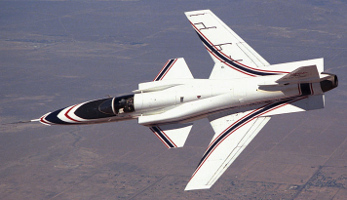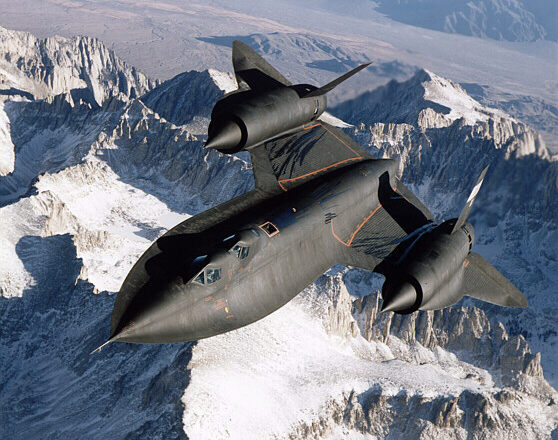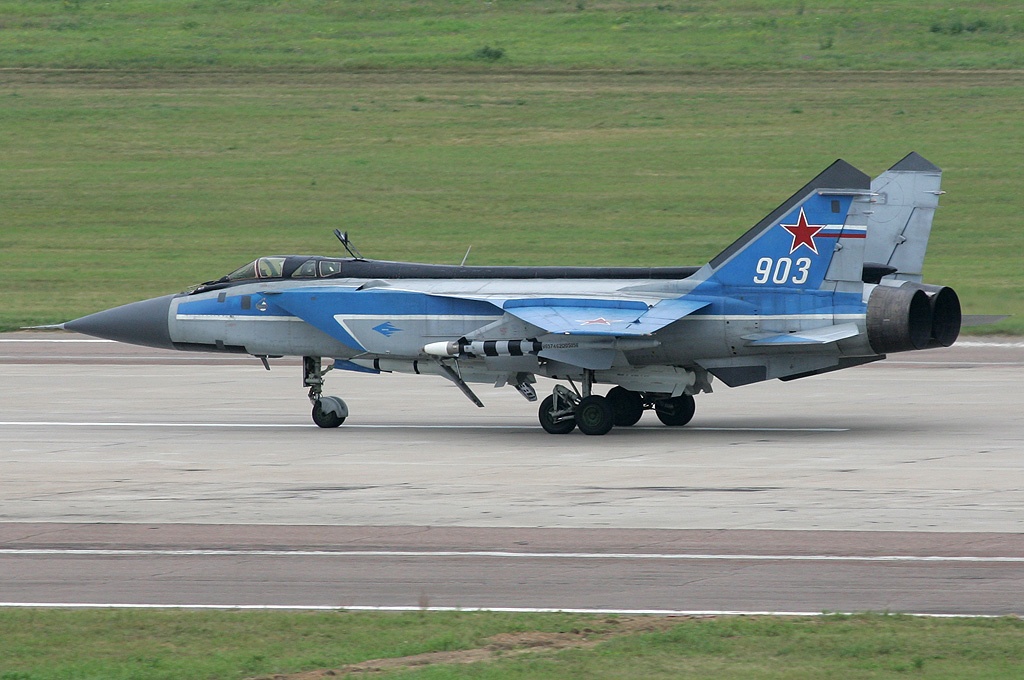|
|
airplane comparisons - jets |
F-14 vs F-15 vs F-16 vs F-18
Size comparison of F-14, F-15, F-16, F-18 fighters.
|
F-14 Tomcat vs F-15 EagleF-14 Tomcat had greater maneuverability, fire-power. Plus swing-wings. F-15 Eagle had greater acceleration, climb-rate.
|
F-14 Tomcat vs F-18 HornetF-14 Tomcat was designed as a long-range interceptor and tight-turning dog-fighter -- conflicting design goals -- which Grumman solved using swing-wings. F-18 Hornet was designed as a light-weight less-capable fighter. F-18 was inferior in almost every aspect. It couldn't reach Mach 2, had shorter range, wings only optimal at a narrow speed range, etc. F-18 had more modern avionics (but avionics can be upgraded). F-18 only replaced F-14 for political/economic reasons. Idiot politicians [ref: Dick Cheney] assumed anything with a greater numeric designation was superior. Grumman knew US Navy knew Tomcat was superior, then wrongly bet US Navy would pay a high price for building new Tomcats. Instead, US Navy went shopping, paid less, got less -- "Super Hornet" was just a scaled-up Hornet.
|
F-14 Tomcat vs MiG-23
Score:
MiG-23 was an under-appreciated fighter. MiG excelled in making MiG-23 small, light, sleek, while other variable-swing airplanes became large and heavy. MiG-23 with wings spread wasn't much wider than F-14 with wings swept. Although MiG-23 only had a single engine, it had strong acceleration and speed, its main (or only) advantage. Speed was over Mach 2, at sea level over Mach 1. MiG-23 had a slow turn-rate, short range, pilot couldn't see what was behind. Almost every nation that had MiG-23s has replaced them. No longer a secret, USAF has publicized that at least two MiG-23s are at their museum [link #1 to af.mil] [link #2 to af.mil]. |
F-16 Viper vs F-18 HornetAs a dog-fighter, F-16 is superior. After YF-16/YF-17 competition, USAF said F-16 was a better plane. F-16 is lighter, less drag, faster, greater acceleration, higher G, faster roll, etc. F-18 has one small advantage: it can whip its nose around at low speeds. [ref: F-16 vs F-18 defence.pk]]
|
F-15 Eagle vs MiG-25 FoxbatF-15 and MiG-25 look similar. MiG-25 was introduced first. Their basic shape derives from North American's Vigilante (designed in ~1950). US thought its F-15 Eagles would be more than a match for MiG-25 Foxbats. But Iraqi MiG-25s proved otherwise. An Iraqi MiG-25 evaded F-15 missiles by dropping chaff/flares, evaded F-15 guns by simply outrunning F-15s. Iraqi pilot would've escaped, but unluckily happened to fly toward another F-15 outside the arena.
|
F-15 Eagle vs F-22 RaptorF-15 has great speed and rate-of-climb, but its maneuverability is sub-par compared to an F-14 and F-16. F-15 frames are worn and need to be replaced. But F-22 is terribly unreliable (despite 20 years of development). Some advocate semi-stealthy F-15 Silent Eagle as a lower-tech complement.
|
F-22 Raptor vs Su-47 BerkutSu-47 certainly can outmaneuver F-22. Su-47 has more lift area, it has two-axis thrust vectoring vs F-22's one-axis, forward-swept wings are more maneuverable than backward-swept. Su-47 probably would win if it can get within visual range (unless F-22 avionics computer can automatically dodge bullets?). But F-22 is designed to kill Russian fighters from a distance. But so was F-4 Phantom.
|
F-35 vs MiGs/SukhoisIf detected by a MiG or Sukhoi, over-weight F-35 with its stubby wings will be shot down with ease.
|
F-35 vs A-10 Wart HogA-10 Thunderbolt II (Wart Hog) was specifically designed for role of close-air support. In this role, stealth isn't necessary -- a big gun is. A-10 has one, F-35 doesn't.
|
Grumman X-29 vs Su-47 BerkutGrumman X-29 was smaller and much lighter (~15000lbs, 25% of Su-47's weight). Su-47 has two-axis thrust vectoring. A dog-fight would've been interesting. X-29 was extremely unstable, so unstable that if electric or hydraulic power failed, it would tumble +-6G within a fraction of a second. Instability was caused by its canards, not its wings swept forward. But its instability made it very maneuverable. Its maneuverability was a combination of canards, wings swept forward, wings with variable camber, strakes, light-weight, fly-by-wire. X-29 could out-turn any aircraft US had (~1984). Thrust/weight ratio with GE404 engine was around 1. Grumman built two X-29s on Northrop F-5 frames with parts from F-16, F-18, SR-71. X-29 project was completely successful, notable for trouble-free flights, computer simulations accurately predicting actual performance. Despite proof-of-concept, US hasn't made any forward-swept fighters. Reasons seem to be forward-swept wings aren't stealthy, higher fuel consumption from drag caused by continually adjusting pitch, aerodynamic instability becomes instantly dangerous if a control surface fails.
|
SR-71 Blackbird vs MiG-31 FoxhoundDubiously, Soviets asserted MiG-31 Foxhounds were able to "intercept" (threaten) SR-71 Blackbirds. Using carefully planned prepositioning, a squadron of MiG-31s were able to fly, for a short time, underneath and within radar range of Blackbirds, threatening Blackbird pilots with possible long-range missile shots. Older MiG-25 Foxbats were no threat because of their less-capable radar/missiles.
|

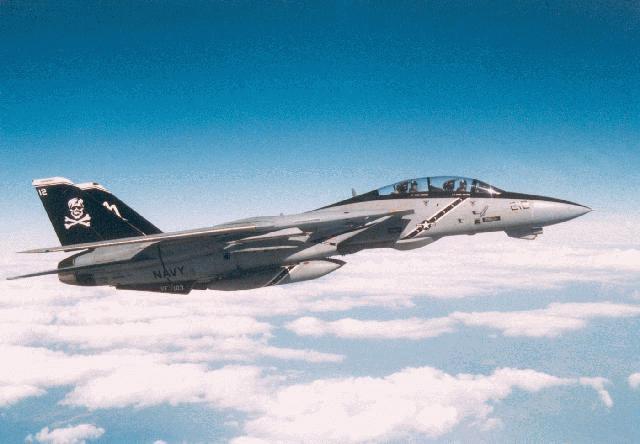
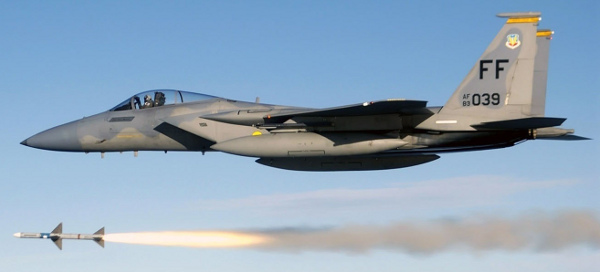
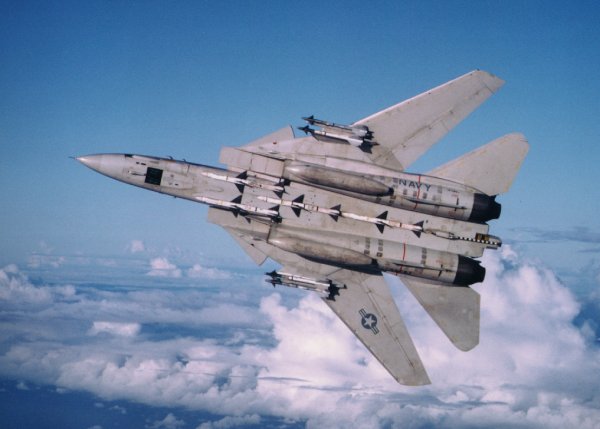
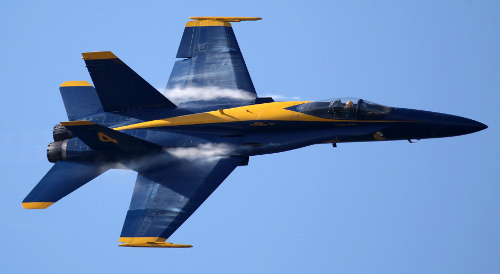
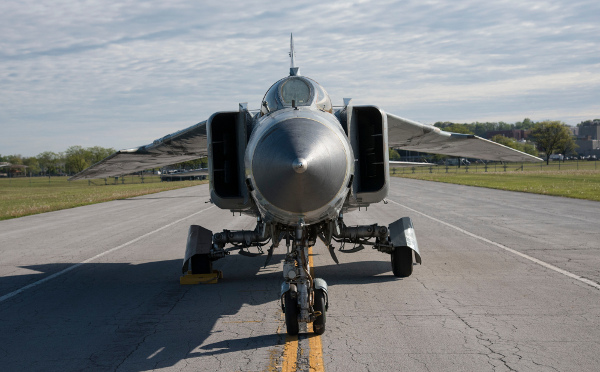
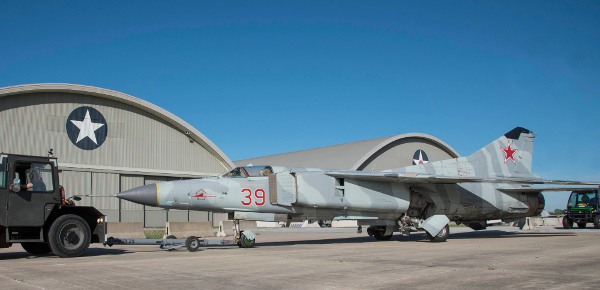
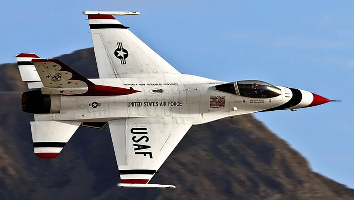
 North American Vigilante (designed in 1950)
North American Vigilante (designed in 1950)
 F-15 Eagle
F-15 Eagle
 MiG-25 Foxbat
MiG-25 Foxbat
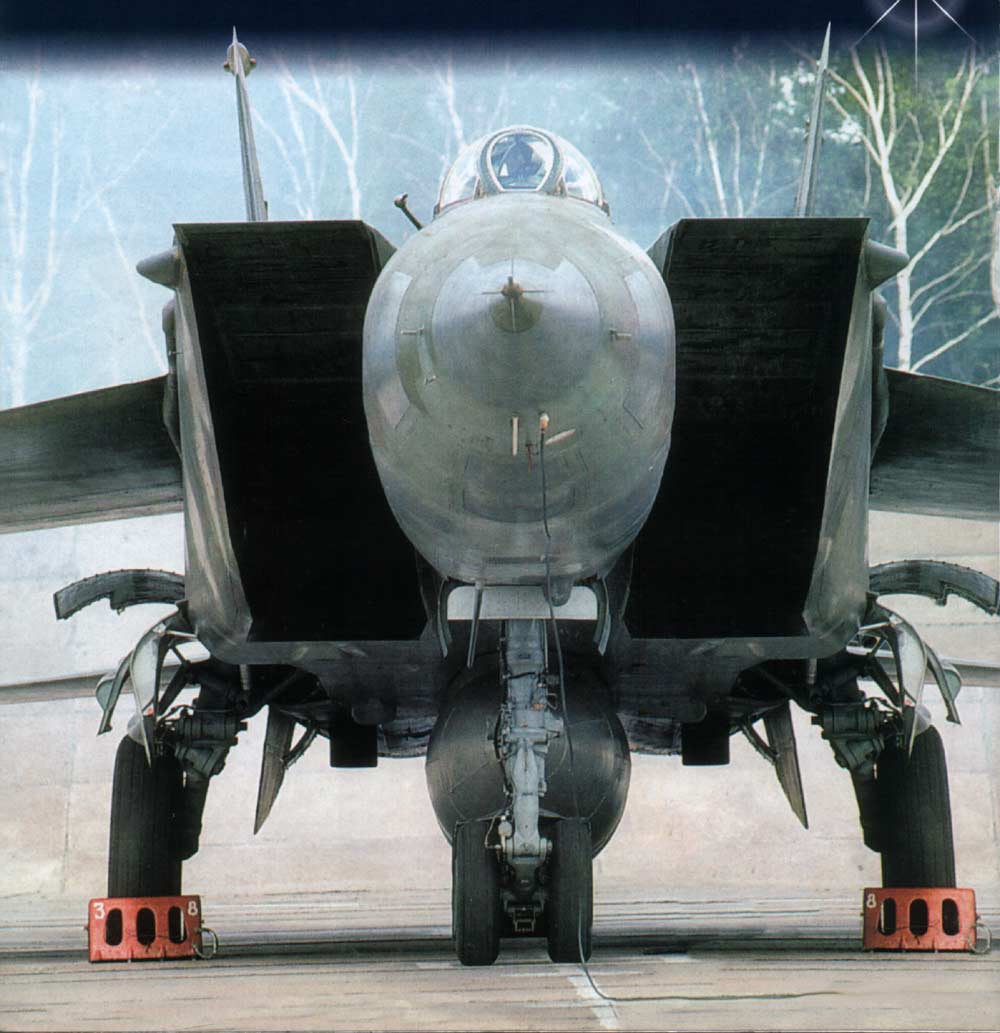
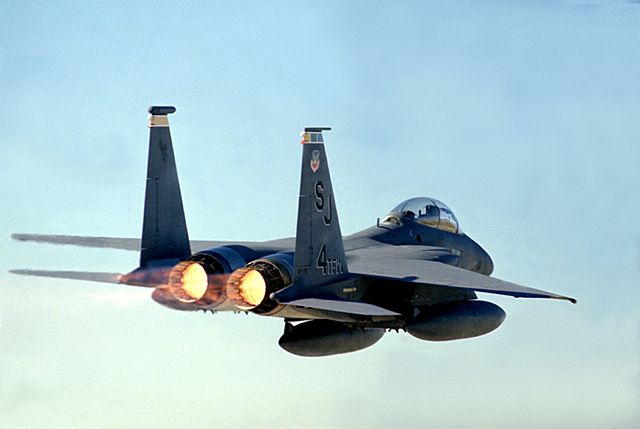
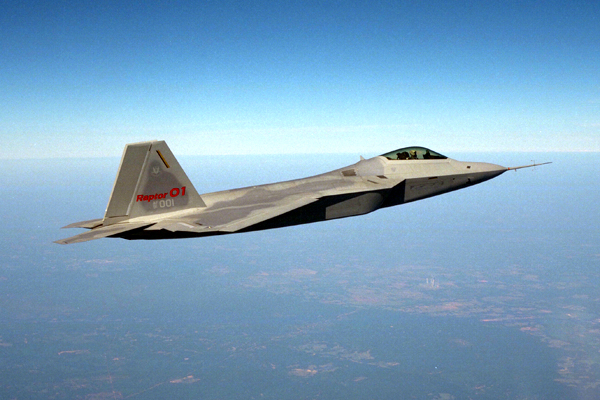
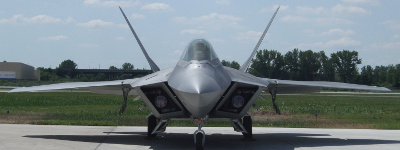

 F-35, fat turkey
F-35, fat turkey
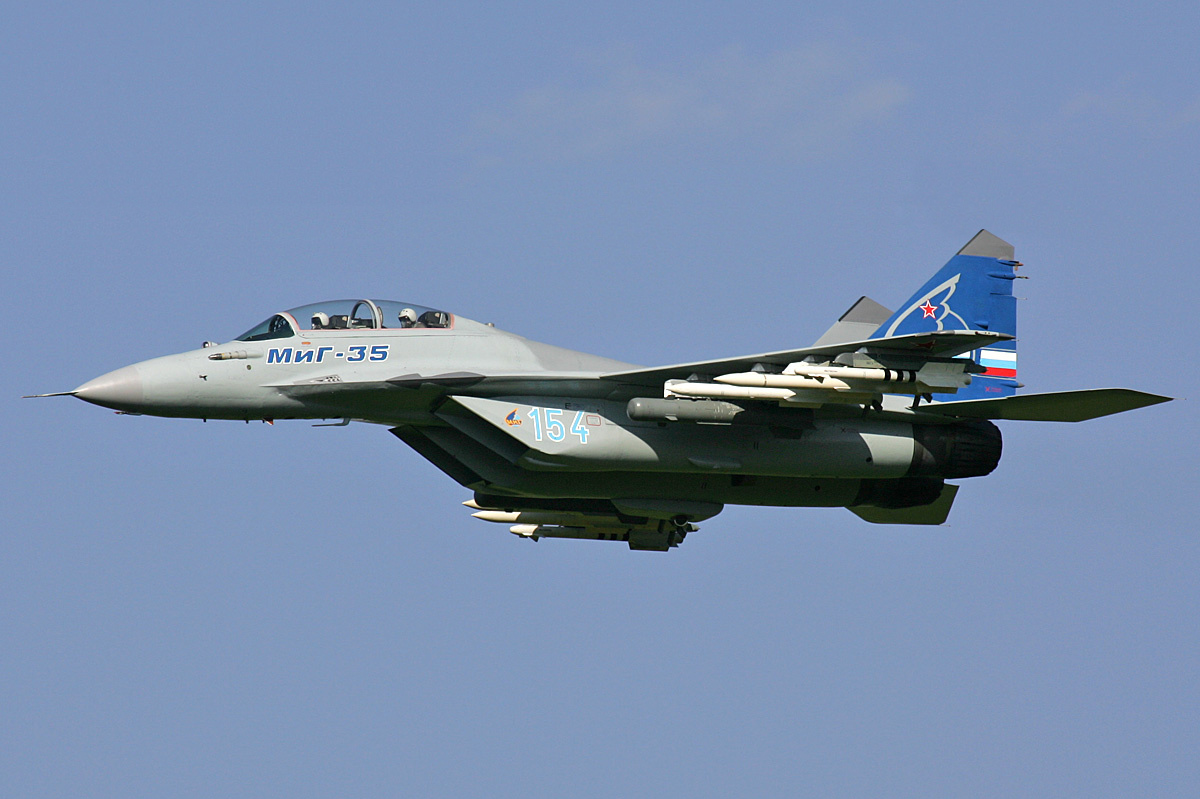 MiG-35 (resembles F-14 Tomcat)
MiG-35 (resembles F-14 Tomcat)
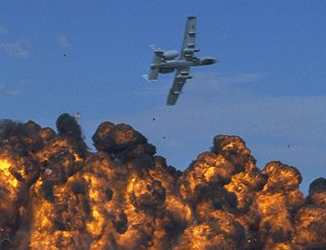
 A-10 was built around its gun
A-10 was built around its gun
